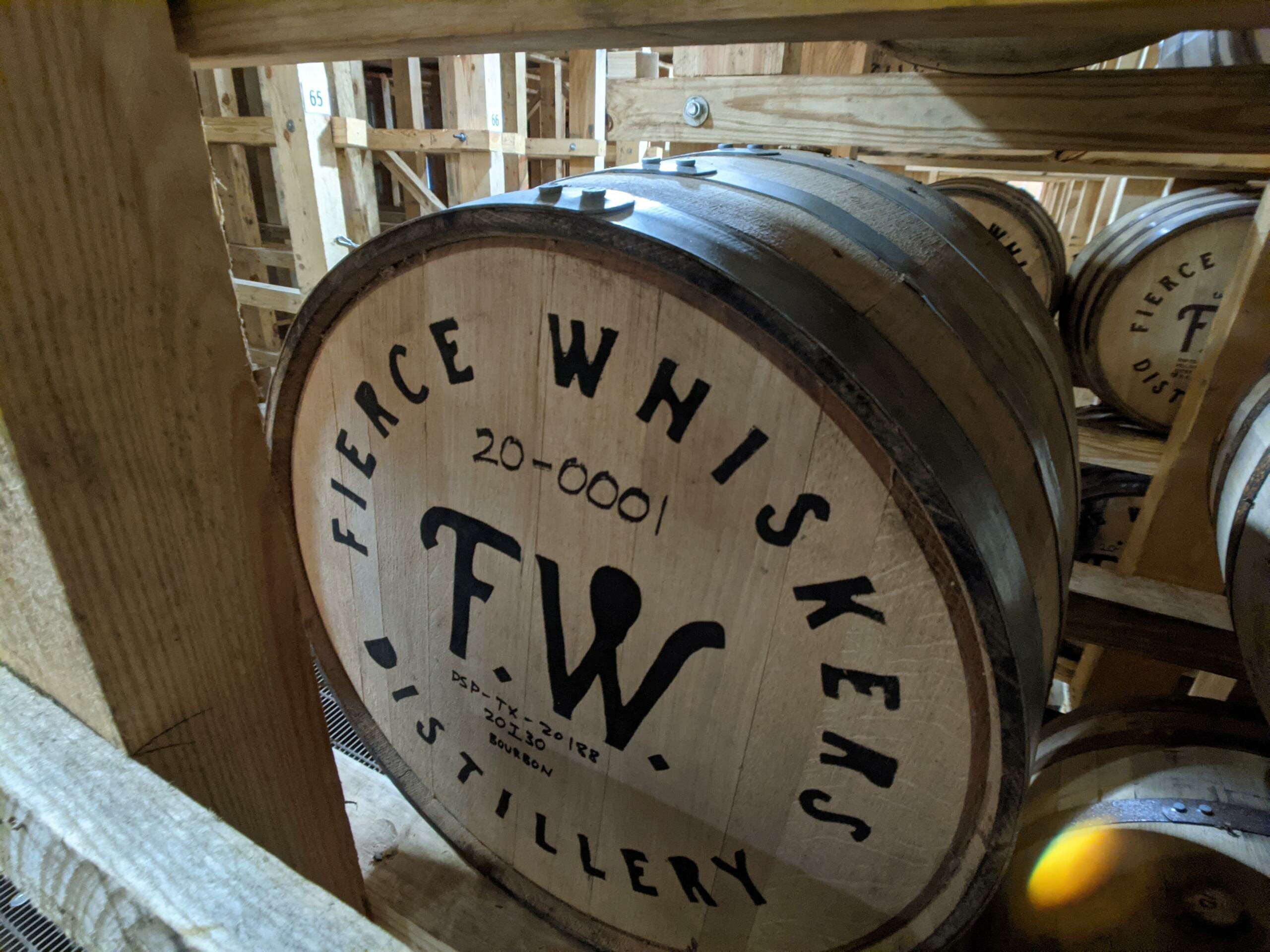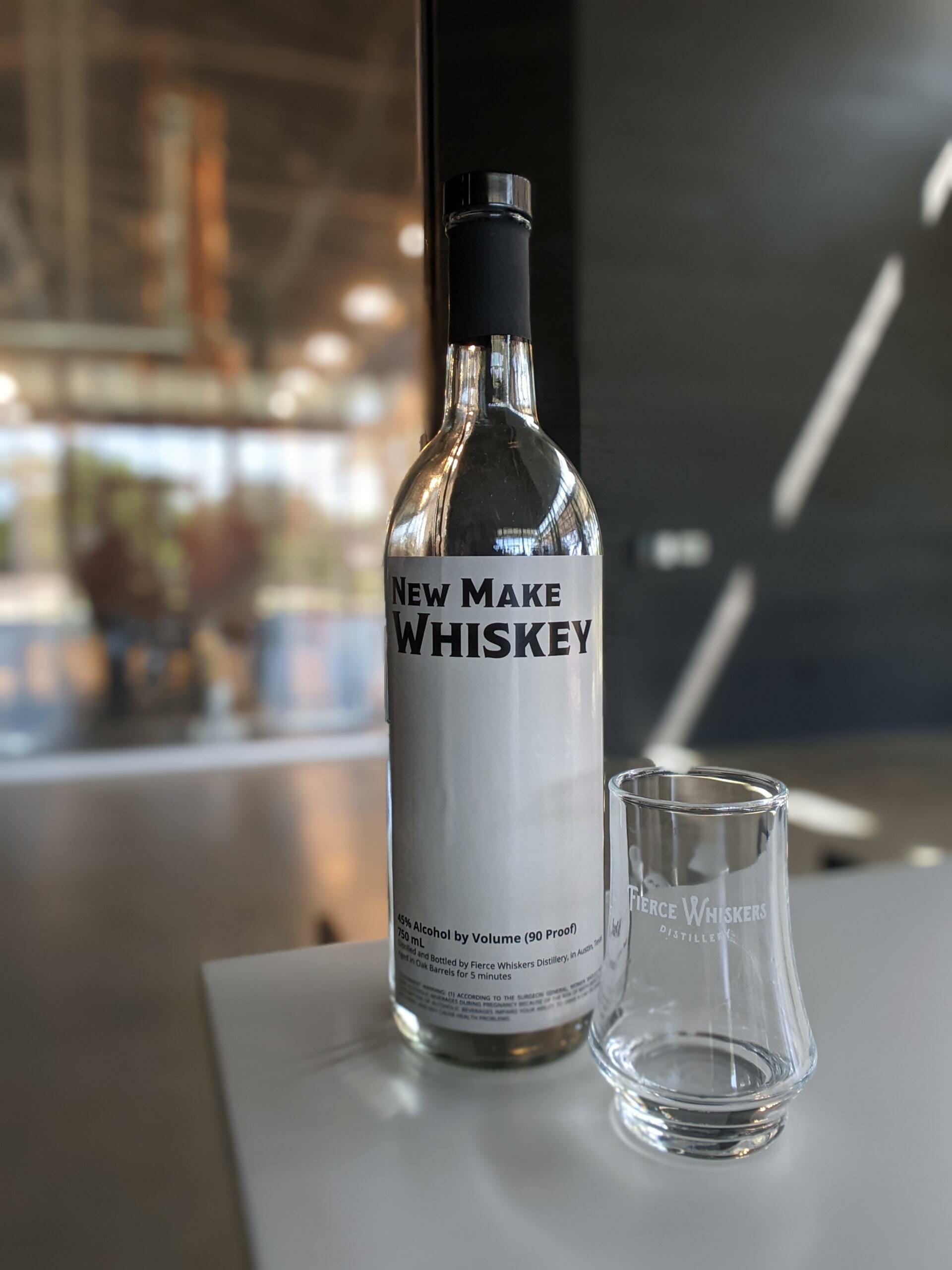
Austin, Texas is currently one of the fastest growing cities in the United States. With its booming tech and tourism industry (and near constant influx of new residents), it makes sense that there are a number of distilleries and businesses popping up to take advantage. Austin already has one local distillery within city limits, but newcomer Fierce Whiskers hopes to challenge the old western saying “this town ain’t big enough for the two of us.”
Advertisment
The History
Fierce Whiskers is a new player in the Austin, Texas whiskey scene. Founded by Tri Vo and Tim Penney, a pair of high school friends who had made their money in energy trading, who had purchased a six acre chunk of land near the airport and decided to open the second licensed distillery in the city of Austin (second after Still Austin). Construction of the distillery started in 2018 and the first barrel of whiskey rolled off the filling station in October of 2020.
Why “Fierce Whiskers” as a name? It’s the same reason that there are pictures of Rutherford B. Hayes upside-down all around the facility. In 1849, twenty-eight years before he became President of the United States, the famous teetotaler visited the city of Austin and had some choice words to say about its residents. Specifically, he described the city as:
…an inconsiderable villiage… with ‘large expectations’… full of discharged ‘Rangers’… costumes of every variety… fierce whiskers, gaming, and drinking very abounding in all quarters.”
Rutherford B. Hayes, 1849
The words were meant to be derogatory — but for those who live in Austin, it’s actually a pretty good description of the kind of lifestyle that drew them to this city and the weirdness that keeps it alive. Which is why the founders of Fierce Whiskers decided to pluck those two interesting words out of the description and make it the name of their new distillery.
As is common with other local distilleries around Austin, the company focuses on grain to glass production of their spirits (meaning that all parts of the distillation process are under their control and happen within the state) and sustainable manufacturing methods. But the two things that they hope will help them stand out from the crowd are a focus on live events at their six acre facility and their state of the art rickhouse that we’ll talk about in a minute.
The Distillation Process

As you might expect from a truly local business focused on sustainability, most of the raw materials for the spirits come in from local farmers. The distillery uses a combination of corn, rye, wheat, and malted barley that all come in as raw materials. When being added to a batch, the raw ingredients are transported through a conveyor system to a milling room where the grains are broken apart in preparation for cooking.
Similarly, the water being used for the process is standard Austin city tap water. According to Fierce Whiskers, the limestone rocks underneath the city provide some great minerals and elements in the water that makes for a great flavor. And for proofing (or cleaning), there’s a reverse osmosis machine to generate purified water as needed.

Once the grains have been milled, they are added to a brand new Vendome manufactured wash tun for cooking. This is where the starches in the grains are broken down into easier to digest simple sugars for the next step in the process.
Until this point, pretty much everything has been automated — the grain is selected by computer control, transported in precise quantities, added to the proper level of water, and cooked to time and temperature according to a state of the art system that will hopefully lead to better consistency in the final product. But this is where mother nature steps in.

Once the sugary liquid has been produced, it is pumped into one of ten open fermentation vats where yeast is added and starts to convert the sugary liquid into heat, carbon dioxide, and alcohol. The vats are temperature controlled using water cooling jackets to ensure that the yeast stays happy and productive without overheating.
At this point, the liquid has about a 10% alcohol content and tastes pretty terrible. In other words: it’s time to distill it.

Fierce Whiskers uses an interesting hybrid pot still that is clearly visible from the tasting room. The large base is shaped like a normal copper pot still, but sitting on top of that is a five chamber column still that helps to increase the alcohol content and efficiency of the distillation process. According to the staff, even with the column still, the spirits still take about three to four “stripping runs” where the heads and tails are progressively sliced away before they can do a true spirits run and capture a finished “new make” spirit.

One thing that’s evident throughout this process: Fierce Whiskers is focused on repeatable and consistent processes. Whether that’s the computer controlled cooking process or the precision of the instrumentation in this spirits vault where they monitor the output from the still, they seem to be trying to add as much science to the art of distillation as possible.
For some spirits, this may be the end of the line. Fierce Whiskers intends to produce a rum, a gin, and an “agave spirit” (basically, a tequila not produced in Mexico) when they open their tasting room doors — all of which require no aging before they can be bottled and sold.
But this won’t be the case for the “flagship” spirits they intend to launch: a rye, a bourbon, and a single malt whiskey. For these aged spirits, the distilled alcohol is placed into new charred oak barrels from a cooperage in the Midwest, and then rolled into their state of the art rickhouse.

A rickhouse (which is a “rack house” after you’ve had a few too many bourbons) is where whiskey barrels are traditionally stored. Many distilleries, especially those in Texas, choose to store their spirits in warehouses and typically in an upright position with the head of the barrel on top. This is easier to store and transport, but the folks at Fierce Whiskers believe that storing whiskey on its side is going to provide a better experience primarily because it keeps the whiskey in contact with the most heavily charred parts of the barrel and allows for better expansion of the wood.

The rickhouse for Fierce Whiskers was designed by a local architecture firm with the help of an expert who previously worked with Jim Beam. It is designed to use as little power as possible, and is oriented to best capture the local wind for cooling the building in the summer and painted black to retain heat in the winter.

At the time I visited, the rickhouse was just starting to get filled up. The building has a capacity of 5,400 barrels, but only about 350 were actually being stored and the distillery was cranking out an additional 3ish barrels per day. Needless to say… they have plenty of room to grow.
Advertisment
Things To Do at the Distillery

Fierce Whiskers isn’t *technically* open for business yet, but they are doing a bunch of distillery tours. Available to book on their website, during these tours you’ll probably get to try a taste of their 5-month aged new make whiskey (but that’s about it).
That said, the distillery has big plans to eventually create a destination location in Austin where people can come enjoy live music, good whiskey, and good food. It’s a similar business model to Treaty Oak, another distillery located solidly outside city limits (and impossible to get an Uber to or from). At the moment, though, none of that is finished — the tasting room were still just bare walls and a concrete slab when I took my tour — but they hope to fix that quickly. The tasting room aims to be open for business around Labor Day 2021, with the outside venue completed sometime prior to October (when the head distiller intends to use it as his own wedding venue!) On behalf of whiskey lovers living in Austin and who plan to visit Austin, we’ll keep y’all updated.
Advertisment
